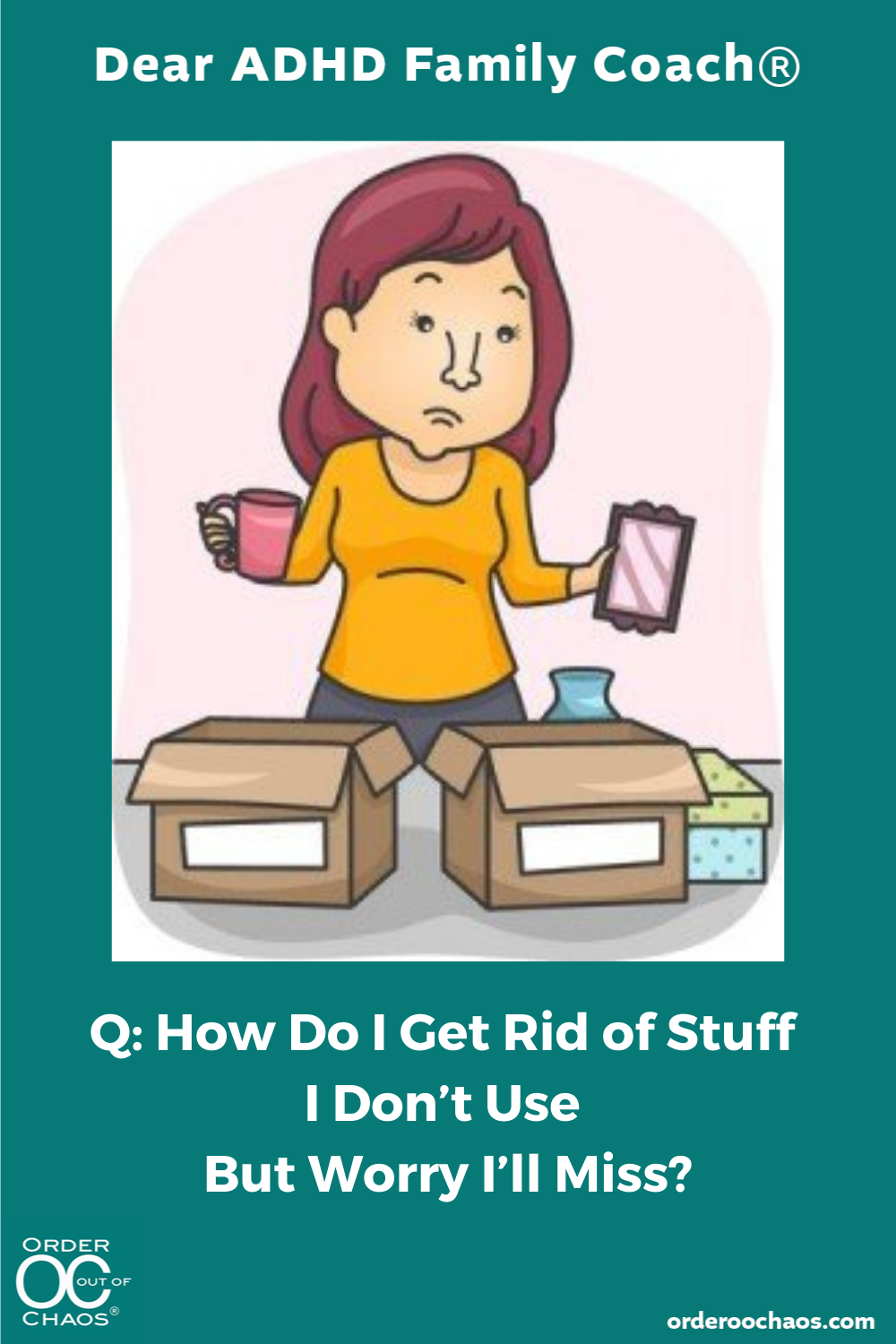Q: How Do I Get Rid of Stuff I Don’t Use But Worry I’ll Miss?
Here, learn how to get rid of stuff with sentimental value but little purpose that is cluttering up your life with ADHD. Practical advice for simplifying your home in the New Year.
This Dear ADHD Family Coach® column was originally written for ADDitude Magazine.
Q: “I want to try to clean up my house in the New Year. I’m holding on to a lot of stuff I got on vacations or that was given to me as gifts. How can I toss things that I don’t need but am anxious about throwing out? I want to keep some sentimental stuff or at least figure out how to keep the memories without keeping all the things. I’m not a hoarder.” – TampaGal
I’ve been inundated over the last few months with questions like this from parents trying to set up effective Hi TampaGal:
Holding on to things because they have sentimental attachment is complicated. We’ve been taught to feel guilty about getting rid of items that have been given to us as gifts or that we’ve inherited. Also, just because something might be memorable doesn’t necessarily make it important. Stuff need not exist in your present to prove your past existed.
Many years ago, I spent most of my days in other people’s homes helping them detach from their stuff. (I was a hoarding specialist.) I never took that privilege lightly. It allowed me a bird’s eye view into people’s relationship to their stuff. Here are a few techniques I used to help people detach from their belongings.
Like what you are reading? WANT MORE? Here are a few articles related to this topic:
Judith Kolberg came up with the term “Tactile Sympathy.” It means that when we touch our things – especially those that have meaning – it can set off an intense emotional response. In other words, our emotions get in the way of making practical or even logical decisions regarding keeping or disposing of stuff. And when you hold it or touch it, those special moments and memories come flooding back. So try this technique: Work with a friend or family member to de-clutter. Have THEM hold up each of your items while you make all the decisions. By putting some “distance” between you and your things, you may better recognize your sentimental vs. practical reasons for keeping them.
Taking photos is a great way to preserve the memories without cluttering up your home. Years ago, I had a client who had hundreds of teapots that she had either collected or been given as gifts over the years. She was very reluctant to part with them as she was afraid the memories would be lost. We created a beautiful coffee table book filled with pictures of each teapot and its corresponding story (who gifted it, where she purchased it, etc.) The book sat prominently on her coffee table and was a real conversation starter. Whenever she felt sentimental, all she needed to do was leaf through the book.
Plan a proper good bye. I take people’s attachment to their possessions very seriously. And I have found that some individuals feel their belongings almost take on a life-like quality, which makes it that much harder to part with them. If that is the case for you, then feel free to honor your feelings. With my clients, in the past, I have participated in memorial services, sat “shiva” (the Jewish practice of mourning), and attended tribute ceremonies.
Please find whatever it is you need to put true closure on releasing the belongings that are taking up precious space in your home and in your life. And release the guilt that you might be feeling as well.
Good Luck!
OUR MISSION
Order Out of Chaos’ mission is to provide hands-on education, guidance, and coaching to parents and their students through our customized products and programs, so all children – both mainstream and with learning difficulties – can develop the necessary skills needed to experience success in learning and in life.




